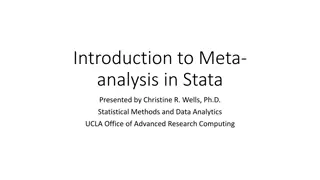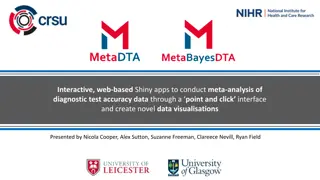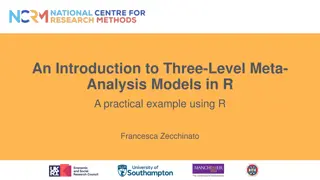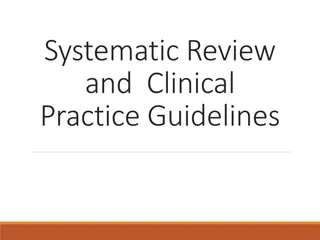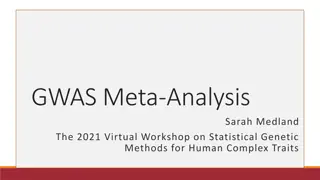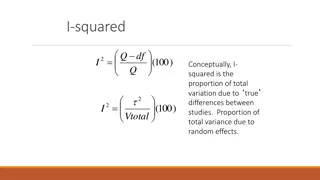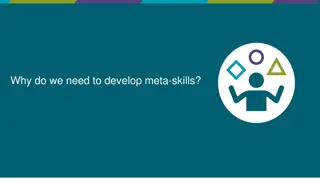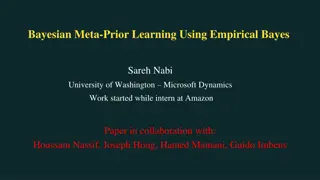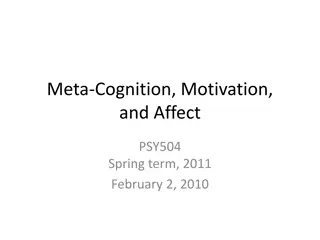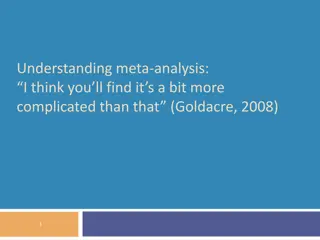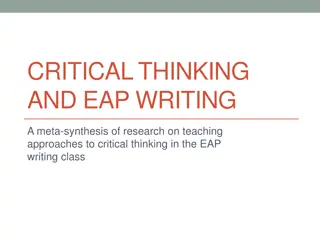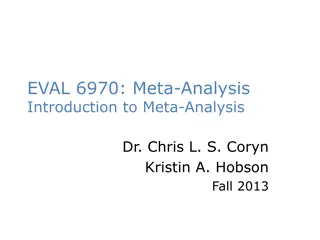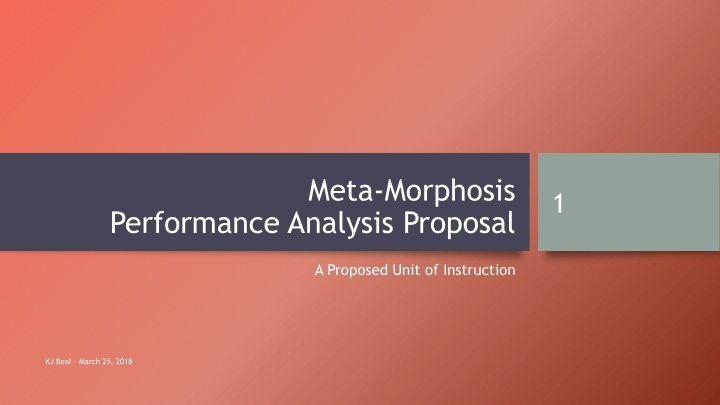
Enhancing Social Emotional Skills: Meta-Morphosis Performance Analysis Proposal
Explore the Meta-Morphosis project by KJ Beal focusing on bridging the gap in social-emotional skills for successful re-entry amongst offenders. The proposal involves task-centered strategies and peer interaction, aiming to enhance emotional understanding, anger management, conflict avoidance, and permission-seeking behaviors. Ethical considerations and evaluation methods are also outlined in the plan.
Download Presentation

Please find below an Image/Link to download the presentation.
The content on the website is provided AS IS for your information and personal use only. It may not be sold, licensed, or shared on other websites without obtaining consent from the author. If you encounter any issues during the download, it is possible that the publisher has removed the file from their server.
You are allowed to download the files provided on this website for personal or commercial use, subject to the condition that they are used lawfully. All files are the property of their respective owners.
The content on the website is provided AS IS for your information and personal use only. It may not be sold, licensed, or shared on other websites without obtaining consent from the author.
E N D
Presentation Transcript
Meta-Morphosis 1 Performance Analysis Proposal A Proposed Unit of Instruction KJ Beal March 25, 2018
Project Design 2 Task-centered instructional strategies and peer- interaction Social Cognitive Approach Modified ADDIE process Pebble-in-the- Pond approach KJ Beal March 25, 2018
Analysis Summary 3 Learning Gap: Learner analysis: Goal analysis: Task analysis: A gap remains between the social emotional skills offenders need for successful re-entry and the skills offenders possess. Pre-class assigned self- assessment to determine current levels of social emotional skills. Apply social emotional skills more confidently in various settings such as school, community, work, peer- groups. Understand the emotions of others, deal with anger in others, avoid trouble situations, and ask for permission. KJ Beal March 25, 2018
Learning Objectives 4 Upon completion of the training, the learner will practice and demonstrate characteristics of necessary social emotional skills, including: Understand the emotions of others Deal with anger in others Avoid trouble situations Ask for permission KJ Beal March 25, 2018
Session Instruction Process Example 5 KJ Beal March 25, 2018
Ethical Considerations 6 Meta-Morphosis does not provide therapy or counseling, including behavior modification. Meta-Morphosis will refer the learner who has additional needs to the DYS facility social worker for further consultation. KJ Beal March 25, 2018
Evaluation 7 Evaluation Type When What Level 1 5 weeks post-training Reaction Sheet Level 2 30 days post-training Pen and Paper, Measure Change in Knowledge Level 3 6 months post-training Observation Checklist Level 4 1 year post-training Survey, Measure Changes in Behavior KJ Beal March 25, 2018
Questions? 8 References Allen, M. W., & Sites, R. (2012). Leaving ADDIE for SAM: An agile model for developing the best learning experiences. Alexandria, VA.: Association for Talent Development. ISBN 978-1-56286-711-9 ; ISBN-10: 1562867113 Branch, R. M. & Merrill, M. D. (2011). Characteristics of Instructional Design Models. In Raiser, R. A., & Dempsey, J. V. (2011). Trends and issues in instructional design and technology (3rd edition). Boston: Pearson. Chapman, B. (2010). How Long Does it Take to Create Learning? [Research Study]. Published by Chapman Alliance LLC. Retrieved from http://www.chapmanalliance.com/howlong/ Clark, D. (2015). Estimating costs and time in instructional design. Retrieved from: (http://nwlink.com/~donclark/hrd/costs.html Ertmer, P.A., & Newby, T.J. (1993). Behaviorism, cognitivism, constructivism: comparing critical features from an instructional design perspective. Performance Improvement Quarterly, 6(4), 50-72. DOI: 10.1111/j.1937-8327.1993.tb00605.x. Forehand, M. (2005). Bloom's taxonomy: Original and revised. In M. Orey (Ed.), Emerging perspectives on learning, teaching, and technology. Retrieved from http://epltt.coe.uga.edu/ Kirkpatrick, D.L. & Kirkpatrick, J.D. (2007). Implementing the four levels: A practical guide for effective evaluation of training programs. San Francisco, CA: Berrett-Koehler Publishers, Inc. Mager, R. F. (1997). How to Turn Learners On... Without Turning Them Off: Ways to Ignite Interest in Learning (3rd edition). Atlanta, GA: Center for Effective Performance. Merrill, D. (2009). Chapter 3: First principles of instruction. Retrieved from: http://mdavidmerrill.com/Papers/FirstPrinciplesReigeluthCarr.pdf Schunk, D. H. (2012). Learning theories: An educational perspective. Boston, MA: Pearson. KJ Beal March 25, 2018

